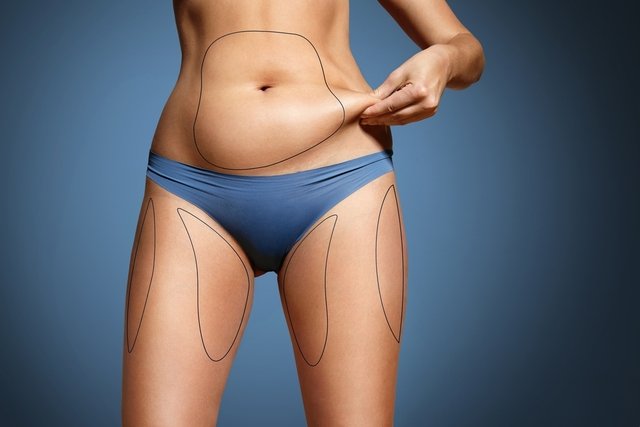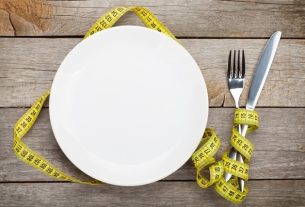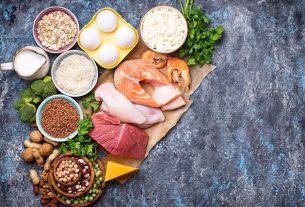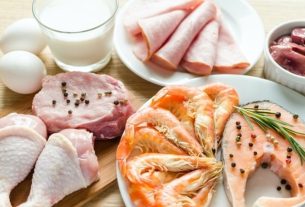The term false thin is normally used to describe people who, despite not being over their ideal weight, do not have a good body composition and have a high body fat index and low levels of muscle mass, which even with their weight within the normal range. Ideally, it increases the chances of developing problems such as high cholesterol, diabetes and even fatty liver.
Therefore, it is important that the falsely thin person adopts good health habits to reduce the amount of fat in the body and increase muscle mass, preventing complications. Therefore, it is recommended that you practice physical activity regularly and have a healthy and balanced diet, preferably rich in proteins and good fats.

Why does it happen
The increase in the level of body fat at the same time as the weight is appropriate for age and height can happen due to genetic factors, because some people have small mutations in the genetic material that favor localized fat.
However, genetics is also influenced by lifestyle habits, such as physical activity and eating habits. Unhealthy eating, rich in sugar, carbohydrates and fat, also favors the accumulation of fat in the body, in addition to increasing the risk of developing diseases and making it difficult to gain muscle mass.
The lack of physical activity, known as a sedentary lifestyle, also favors fat gain, as the body’s metabolism does not undergo changes that favor the burning of fat and the use of this fat as a source of energy. Furthermore, a sedentary lifestyle makes it difficult to gain muscle mass, resulting in normal weight and an increase in the amount of fat.
Therefore, when there are characteristics that can be related to false thinness, it is important that the person consults a nutritionist so that an assessment of body composition can be carried out through bioimpedance or assessment of skin folds, in addition to also recommending that tests be carried out. of blood, such as total cholesterol and fractions and dosage of vitamins and minerals.
See how the bioimpedance assessment works in the video below:
How to reduce fat
To reduce the amount of fat without causing a large amount of weight loss and which can promote the gain of muscle mass, it is important that the person follows a diet with fewer carbohydrates and a greater amount of proteins and good fats, as this way it is possible to stimulate the burning of fat. fat while promoting muscle gain.
Foods rich in good fats are nuts, peanuts, seeds, avocado, coconut and olive oil, and should be consumed together with foods rich in carbohydrates or proteins in snacks, using combinations such as: fruit + nuts, bread + peanut butter, avocado smoothie and yogurt + seeds and chia.
Furthermore, it is essential to practice physical activity regularly, as this means that weight loss and muscle gain can happen in a healthy way.
See how to know the ideal amount of body fat.
How to increase muscle mass
To gain muscle mass, it is important to practice physical activities daily, and it is recommended to practice aerobic physical activities and strength training, such as weight training and crossfitfor example, as they are the ones that most stimulate hypertrophy and muscle strengthening.
Furthermore, it is important to consume foods rich in proteins and natural fats at every meal of the day, including snacks, as this promotes muscle recovery and an increase in lean body mass. Therefore, good options are to include cheese and eggs in snacks, and always consume good amounts of meat, fish or chicken at lunch and dinner.
It is also important to remember that adequate consumption of fruits and vegetables is necessary for the body to function properly and to provide vitamins and minerals that will allow muscle growth.
Menu option for false skinny
The following table provides an example of a 3-day menu for a falsely thin person to gain muscle mass and lose fat:
It is important to remember that ideally, the quantities and distribution of food should be guided by a nutritionist, according to each person’s needs.
Check out the video below for more tips for gaining muscle mass:

Sign up for our newsletter and stay up to date with exclusive news
that can transform your routine!
Warning: Undefined array key "title" in /home/storelat/public_html/wp-content/plugins/link-whisper-premium/templates/frontend/related-posts.php on line 12
Warning: Undefined array key "title_tag" in /home/storelat/public_html/wp-content/plugins/link-whisper-premium/templates/frontend/related-posts.php on line 13




